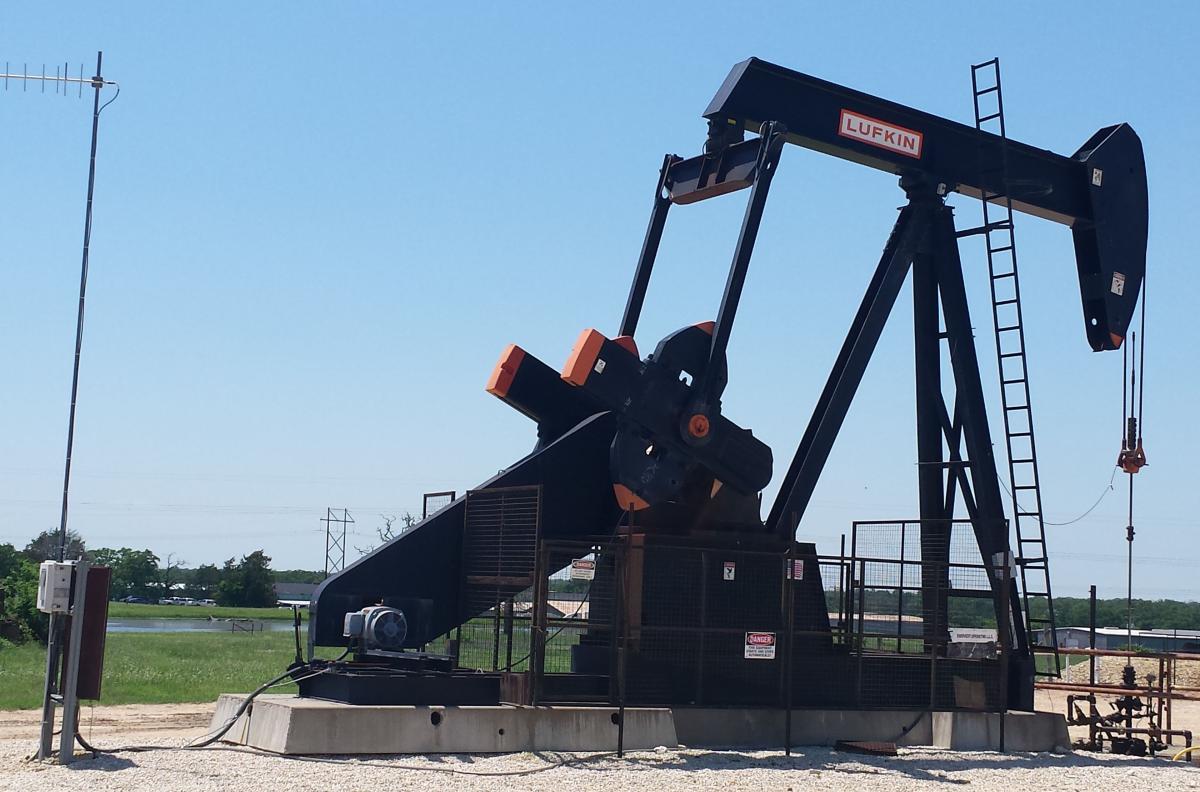
California currently has no setback restrictions, so oil production can occur in the middle of neighborhoods. Photo Credit: Creative Commons
An interdisciplinary team of researchers investigated the carbon emissions, labor and health implications of several policies to reduce oil extraction, with a special focus on how the effects vary across different communities in California. Their results, published in Nature Energy, illustrate the tradeoffs between different strategies. For instance, models banning oil extraction near communities produced greater health benefits across the state, but they also led to more job losses, with disadvantaged communities feeling about one third of both the costs and the benefits.
Our analysis shows that costs and benefits can be borne by the same communities.
Many Considerations
Petroleum production is a multifaceted endeavor. The greenhouse gas emissions from burning fossil fuels are the main driver of climate change. Extracting these resources also emits CO2 into the environment, in addition to air pollution and toxic substances. Any policies seeking to curb oil production will affect people for better and worse. The industry employed 25,000 Californians in 2019, and provides tax revenue to local governments. “Our analysis is trying to quantify what those tradeoffs look like as the state considers different policies,” said co-author Kyle Meng, an associate professor in UC Santa Barbara’s economics department and the Environmental Markets Lab (emLab) at the Bren School of Environmental Science & Management.
“We’re taking traditionally climate-focused policies and comparing them along local impacts, health benefits and employment costs,” added co-lead author Paige Weber, an environmental economist at UNC Chapel Hill, previously an emLab post-doc.
The authors developed a framework to analyze the impact of three policies: an excise tax (paid per barrel); a carbon tax (paid per ton emitted); and setbacks at 1000 feet, 2500 feet and 1 mile. Taxes increase the cost of production, curbing activity and driving down emissions. Setbacks essentially ban extraction in areas where people live. In a previous study, the authors found that production decreases because it might not be economical to drill somewhere else.
To compare between the policies, each setback distance had a corresponding excise and carbon tax level that achieved the same emissions target in 2045.
The authors started with a suite of models to predict oil production in California. Using historical data and economic theory, the team attempted to answer the following questions: Will they drill here? How much will a well produce? When will it shut down?
The researchers then modeled the health impacts of oil production emissions as they spread across California’s communities. Finally, they modeled the outcome that each policy would have on jobs and worker compensation. The authors were especially curious how these effects fell on people living in areas that meet California’s definition of a disadvantaged community.
They calibrated the health and labor consequences of each policy based on its ability to reduce carbon. “We ask, for the same greenhouse gas reduction, which policy has greater health benefits and fewer labor costs, and how are these benefits and costs distributed?” Meng explained.
Always a Tradeoff
Setbacks offered the greatest air-quality improvements, especially to disadvantaged communities. If you move oil production away from where people live, they’ll see health benefits. But there was a surprising tradeoff. When oil production is close to communities, so are the jobs it offers. “The same communities that benefit from cleaner air are also those facing labor market consequences,” Meng said.
During policy discussions, there’s often disagreement between groups highlighting the health impact of oil production and those focused on the employment benefits. “They’re often pitched as separate camps,” Meng continued. “But our analysis shows that costs and benefits can be borne by the same communities.”
Carbon and excise taxes both work by raising production costs, but the two policies target different oilfields. An excise tax eliminates the most expensive operations first, and falls roughly in the middle in terms of job and health implications.
“The cheapest way to reduce greenhouse gas emissions would be with a carbon tax because it goes after the most carbon-intensive oil extractors first,” Weber said. But since it takes the smallest number of wells out of production per ton of carbon emissions reduced, a carbon tax offers the lowest total health benefits, while also leading to the lowest job losses.
The authors believe their estimates of the health impacts are conservative. They focused solely on premature mortality, as other health impacts are more difficult to quantify. As a result, any action will likely improve the health of Californians more than what the study lays out.
Similarly, the researchers expect they overestimated the labor impacts because their framework doesn’t account for the possibility of re-employment. It assumes that every job lost results in unemployment.
The Path Forward
By 2045, California aims to reduce emissions in the transportation sector by 90% compared with 2019. And the Golden State is looking to many policies to achieve this.
“It’s a hotly debated issue right now because the governor just signed a law banning new oil drilling near communities,” said co-lead author Ranjit Deshmukh, an assistant professor in UC Santa Barbara’s Environmental Studies Program. The oil industry quickly circumvented this action by collecting enough signatures to place a referendum on the next ballot.